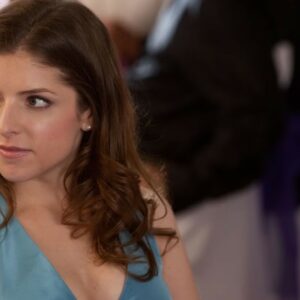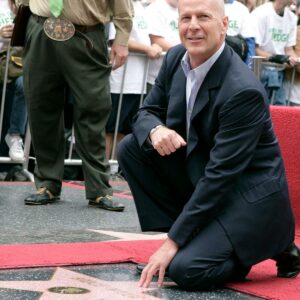In the ever-evolving landscape of pop culture, Pink stands out not only as a musical powerhouse but also as a visual force that continues to break boundaries. From her bold hair colors to her rebellious outfits, Pink’s styling is far more than just a fashion statement; it’s an extension of her music, a visual manifestation of the themes she sings about—empowerment, rebellion, vulnerability, and resilience. Through her journey as an artist, Pink has used her iconic styling to tell stories, challenge norms, and connect with fans on a deeper level.
1. Pink’s Evolution as an Artist and Style Icon
When Pink, born Alecia Beth Moore, burst onto the music scene in the early 2000s, her presence was electric. Her debut album Can’t Take Me Home was drenched in the vibrant energy of R&B and pop, but what truly set her apart was her unapologetically bold style. From the get-go, Pink didn’t fit the mold of the typical pop princess. With her fiery hair, punk-inspired outfits, and fearless attitude, she declared herself a force to be reckoned with.
As Pink’s music evolved, so did her style. The edgy rebellion that defined her early years gave way to a more sophisticated yet still fiercely individualistic aesthetic. From her rugged rockstar looks in Try This to the softer, more introspective visuals of Funhouse, Pink’s style has always mirrored her growth as both an artist and a person. This evolution reflects not just changes in fashion but in her personal journey—one that has taken her from a rebellious teen to a powerful voice of empowerment and authenticity.
Pink’s journey is emblematic of an artist who refuses to be boxed in, constantly redefining herself while staying true to her roots. Her style has matured, but it has never lost its edge. Whether she’s donning an androgynous suit, a flowing gown, or something in between, Pink’s fashion choices continue to reflect the multifaceted nature of her artistry.
2. Rebellion and Empowerment in Early Music Videos
Pink’s early music videos are a masterclass in visual rebellion. Take “There You Go,” the lead single from her debut album, where she catapults herself into the pop world with fiery pink hair, leather jackets, and an attitude that screams independence. The video’s punk-inspired fashion and rebellious energy were a direct challenge to the pristine, polished image that dominated the pop scene at the time. Pink wasn’t just another pop star; she was a disruptor.
In “Get the Party Started,” Pink amps up the rebellious spirit with bold, unconventional styling. From her glittering, oversized sunglasses to her punk rock wardrobe, Pink’s look in the video was all about challenging traditional beauty standards. She wore her nonconformity like a badge of honor, refusing to fit into the industry’s narrow definitions of femininity and attractiveness. This sense of rebellion wasn’t just for show—it was deeply intertwined with the message of empowerment in her music. Pink’s styling during this era was all about claiming her identity and encouraging others to do the same.
3. Vulnerability and Authenticity in Later Works
As Pink’s music matured, so did the emotional depth of her visuals. The rebellious, in-your-face attitude of her early work gave way to a more introspective and vulnerable side. In music videos like “Just Like a Pill” and “Who Knew,” Pink’s styling became more subdued, reflecting the emotional weight of the songs. Gone were the neon colors and spiked hair; in their place were simpler, more understated looks that allowed the raw emotion of the music to take center stage.
In “Who Knew,” Pink’s wardrobe is minimal—simple clothing that lets the heartbreak and vulnerability of the song shine through. The stripped-down styling was a reflection of the song’s themes of loss and longing. Pink’s decision to go for a more natural, less constructed look in these videos demonstrated her willingness to be vulnerable, both visually and emotionally. This authenticity resonated with fans, further solidifying her reputation as an artist who wasn’t afraid to show all sides of herself.
4. The Symbolism of Bold Colors and Accessories
Throughout her career, Pink has used color and accessories as powerful symbols in her visual storytelling. Her signature bright pink hair, which she sported in many of her early videos, became a symbol of her bold personality and refusal to conform. Pink has often used the color pink in various shades throughout her career—not just as a playful nod to her name but as a symbol of femininity redefined on her own terms.
In music videos like “Trouble” and “So What,” Pink accessorizes with chains, leather, and spikes—visual cues that reinforce the themes of empowerment and rebellion central to her music. These elements aren’t just part of a costume; they’re an extension of the narrative she’s telling. The heavy use of black in her wardrobe, often combined with sharp, metallic accessories, evokes strength and resilience. Whether she’s riding a lawnmower through Los Angeles in “So What” or confronting her demons in “Just Like a Pill,” Pink’s styling choices are always in service of the story she’s telling.
5. Defiance of Traditional Gender Norms
One of Pink’s most significant contributions to pop culture is her defiance of traditional gender norms. From the beginning of her career, Pink has embraced androgynous and masculine-inspired looks, challenging the industry’s expectations of how female pop stars should present themselves. In music videos like “So What” and “Raise Your Glass,” Pink rocks everything from leather jackets to shaved haircuts, blurring the lines between masculine and feminine fashion.
This defiance of norms isn’t just about fashion—it’s about Pink’s broader message of individuality and self-acceptance. By rejecting conventional gender roles in her styling, Pink sends a powerful message to her audience: Be yourself, no matter what society tells you. This message is particularly resonant in a world where gender expression is increasingly fluid, and Pink’s fearless approach to fashion has made her a role model for fans of all genders.
In “So What,” Pink’s rebellious persona is on full display as she parades through the streets in a series of androgynous outfits, from a suit to a punk rock ensemble. This visual defiance is a perfect match for the song’s message of resilience and moving on after heartbreak. In “Raise Your Glass,” Pink’s celebration of individuality is mirrored in her eclectic wardrobe, which includes everything from a tuxedo to a studded leather jacket. Her refusal to conform to traditional gender norms is a central part of her identity as an artist, and her styling choices reflect that unapologetically.
6. The Influence of Pink’s Styling on Pop Culture
Pink’s unique styling has left an indelible mark on pop culture. Her fearless approach to fashion has influenced countless fans and fellow artists alike, encouraging them to embrace their individuality and challenge the status quo. Pink’s influence can be seen in the way pop culture has gradually shifted towards a more inclusive and diverse representation of beauty and identity.
Pink’s authenticity—both in her music and her styling—has been key to her lasting appeal. In an industry often dominated by manufactured images and carefully curated personas, Pink has always been refreshingly real. Her willingness to show all sides of herself, from the rebellious to the vulnerable, has made her a relatable and inspiring figure for fans around the world.
Moreover, Pink’s impact extends beyond music. Her fearless styling has resonated with fashion designers, stylists, and influencers who admire her boldness and creativity. The ripple effect of Pink’s influence can be seen in the broader acceptance of alternative styles in mainstream fashion, from punk-inspired looks to gender-fluid fashion.
Conclusion
Pink’s visual aesthetic is more than just fashion; it’s an integral part of her storytelling. Through her styling in music videos, Pink communicates themes of empowerment, rebellion, vulnerability, and defiance. Her evolution as an artist is mirrored in her ever-changing looks, and her bold choices continue to challenge norms and inspire fans around the world.
Pink’s iconic styling is a testament to her status as a true artist—one who uses every aspect of her creative expression to tell her story. Whether she’s rocking a mohawk or a tuxedo, Pink’s visual rebellion is a powerful reminder that music is not just something you hear; it’s something you see, feel, and live. Through her fearless approach to fashion, Pink has solidified her place as a pop culture icon, forever changing the way we think about music and style.





